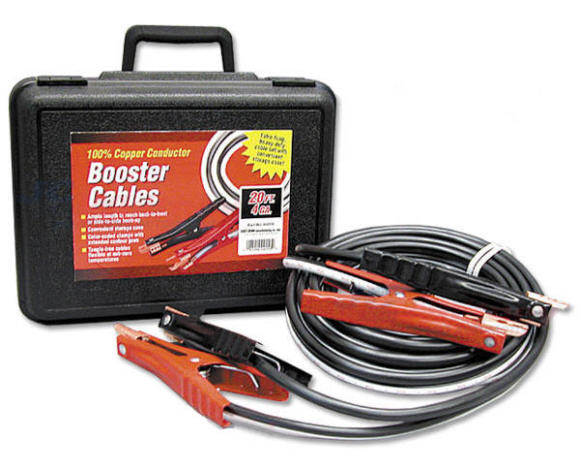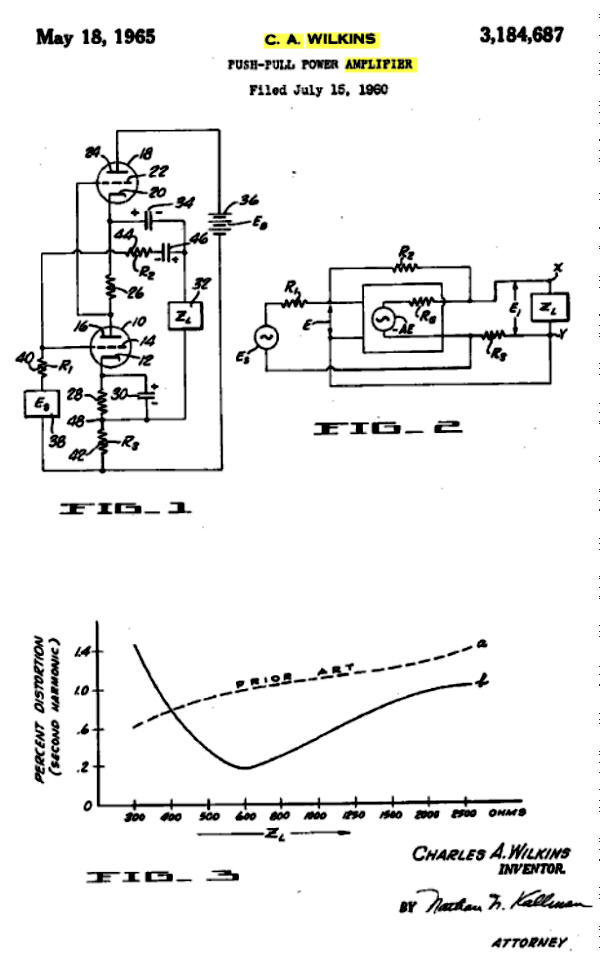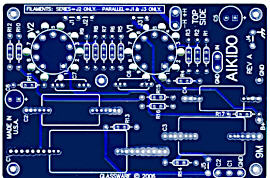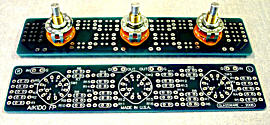|
01 April 2007
Advertisement

Sonic Gold at Silver Prices
Artifice Audio presents a new, higher step in amplifier-loudspeaker-
interface technology: Booster Cables™. Don’t let bargain basement priced, inferior high-end cables rob your system of sonic glory. Our bold, innovative, and exceptional Booster Cables™ convey up to 400 peak Amperes for the deepest bass and highest highs, which are essential to give your system the start and go it needs.
Our passion for cable is rooted in a simple philosophy: develop and manufacture cables that offer the highest performance and price. To reach these goals with each of our products requires an extraordinary amount of dedication, engineering, and marketing know-how. For example, after literally investing thousands and thousands of dollars and many days of careful scrutiny and painstaking design and critical evaluation, this ad was created.
All our cable designs incorporate patented, Golden-Ear price/profit ratio, and a pure ductile, malleable, reddish-brown metallic element that is an excellent conductor of both heat and electricity and whose atomic weight is 63.54; melting point 1,083°C; boiling point 2,595°C; specific gravity 8.96; valence 1, 2 and Fancy-Conductor technology®.
There is nothing quite like experiencing Artifice Audio Booster Cables™. The sales of our cable have certainly changed our lives and persuaded us to make the fulfilling of audiophiles' dreams our lifelong pursuit. Amplifier-loudspeaker-interface technology designed by genuine spurious rocket scientists for the rest of us®.
• Mega-Audio-Grade™ Conductors
• 4 Gauge Wire!
• 400 Amperes!
• Withstands 640,000 Watts into 8-ohm Speakers!
• 20-ft. long cables with color-coded insulation derived from ethylene, univalent chemical radical CH2CH.
• Heavy-duty color-coded clamps with extended contour jaws for fast, easy and secure attachment to loudspeakers' binding posts. Makes other cable terminations look like toys.
• Weather-resistant carrying case.
• Patented Technology.

MSRP of only $12,349 for 20-foot lengths. Slightly more in California, Michigan, and New York states; requires armored personal carrier delivery, depending on ZIP code.
www.ArtificeAudio.com/
Here is an interesting patent by Charles A. Wilkins, a fellow who worked for Amperex and upon whom I will defineatly do more patent searches. Interesting because I came up with the same circuit on my own about 20 years ago, but I never could get it to stop oscillating (big, nasty 50Vpk swings at >500kHz).

Note that the amplifier is described as a push-pull design; also note how the distortion finds a deep null at 600-ohms load impedance. This patent is filled with SRPP references and formulas. If the SRPP is your bag, as Austin Powers would put it, then this is must reading.
Now that I think back, in my version, no feedback loop wrapped around my amplifier. Once again, more experimentation is needed. No fooling.
//JRB
|
|
|
|
Kit User Guide PDFs
Click image to download











 
New 9-Pin & Octal PCBs
High-quality, double-sided, extra thick, 2-oz traces, plated-through holes, dual sets of resistor pads and pads for two coupling capacitors. Stereo and mono, octal and 9-pin printed circuit boards available.
Designed by John Broskie & Made in USA
Aikido PCBs for as little as $24
http://glass-ware.stores.yahoo.net/
Only $19.95
to keep track of your
tube and part collection
TCJ My-Stock DB
TCJ My-Stock DB helps you know just what you have, what it looks like, where it is, what it will be used for, and what it's worth. TCJ My-Stock DB helps you to keep track of your heap of electronic parts. More details.
List all of your parts in one DB.
Add part Images.
One-click web searches for part information.
Vertical and horizontal grids.*
Create reports as PDFs.*
Graphs added 2D/3D: pie & bar.*
More powerful DB search.
Help system added.
Editable drop-down lists for location, projects, brands, styles, vendors and more.
*User definable
For more information, please visit:


The TCJ Stepped Attenuator
This specially designed stereo attenuator uses three rotary switches and 32 resistors to yield 36 volume positions. This hybrid attenuator uses a combination of both ladder- and series-stepped attenuators. In the first six positions, the attenuator is just a ladder attenuator, with no more than two resistors in the signal path; thereafter, the attenuator uses both a ladder and series configurations, with never more than eight resistors in the signal path. With -2dB decrements, a maximum of -70dB of attenuation is possible; with -1dB decrements, a maximum of -35dB of attenuation.
The center knob controls both channels, and offers six large decrements; the flanking knobs offer six fine decrements for each channel, creating a volume control and balance control in one easy-to-use stepped attenuator.
This clever attenuator uses fewer resistors (only 32) than would be expected from a conventional 32-position stepped attenuator, as two series attenuators would need a total of 72 resistors; and two ladder attenuators would require 140 resistors. In addition, the PCB holds dual sets of resistor pads, one wide and one narrow, so that axial (composition, wire-wound, and film) and radial (thick-film and bulk-foil) resistors can be used without extra lead bending.
Although designed to go with the Aikido amplifier, it can be used anywhere a high-quality attenuator is needed, whether passive or active. For example, it would make a first-rate foundation to an excellent passive line box.
Designed by John Broskie & Made in USA
Visit our Yahoo Store for more details:
http://glass-ware.stores.yahoo.net/
Only $9.95
to start designing tube-based
crossovers and much more...
TCJ Filter Design


The Tube CAD Journal's first companion program, TCJ Filter Design lets you design a filter or crossover (passive, solid-state or tube) without having to check out thick textbooks from the library and without having to breakout the scientific calculator. This program's goal is to provide a quick and easy display not only of the frequency response, but also of the resistor and capacitor values for a passive and active filters and crossovers.
TCJ Filter Design is easy to use, but not lightweight, holding over 60 different filter topologies and up to four filter alignments:
Bessel,
Butterworth,
Gaussian,
Linkwitz-Riley.
While the program’s main concern is active filters, solid-state and tube, it also does passive filters. In fact, it can be used to calculate passive crossovers for use with speakers by entering 8 ohms as the terminating resistance. Click on the image below to see the full screen capture.

Tube crossovers are a major part of this program; both buffered and un-buffered tube based filters along with mono-polar and bipolar power supply topologies are covered. Available on a CD-ROM and a downloadable version (4 Megabytes).
|



























